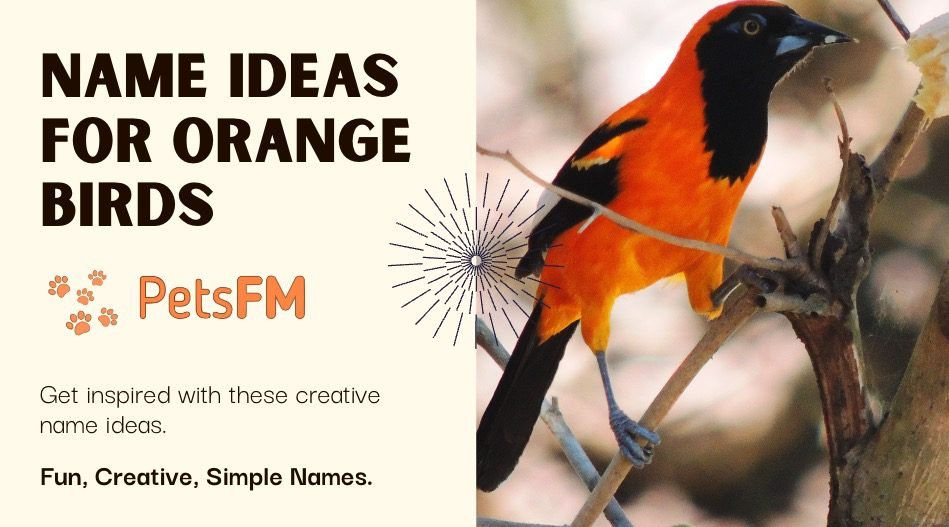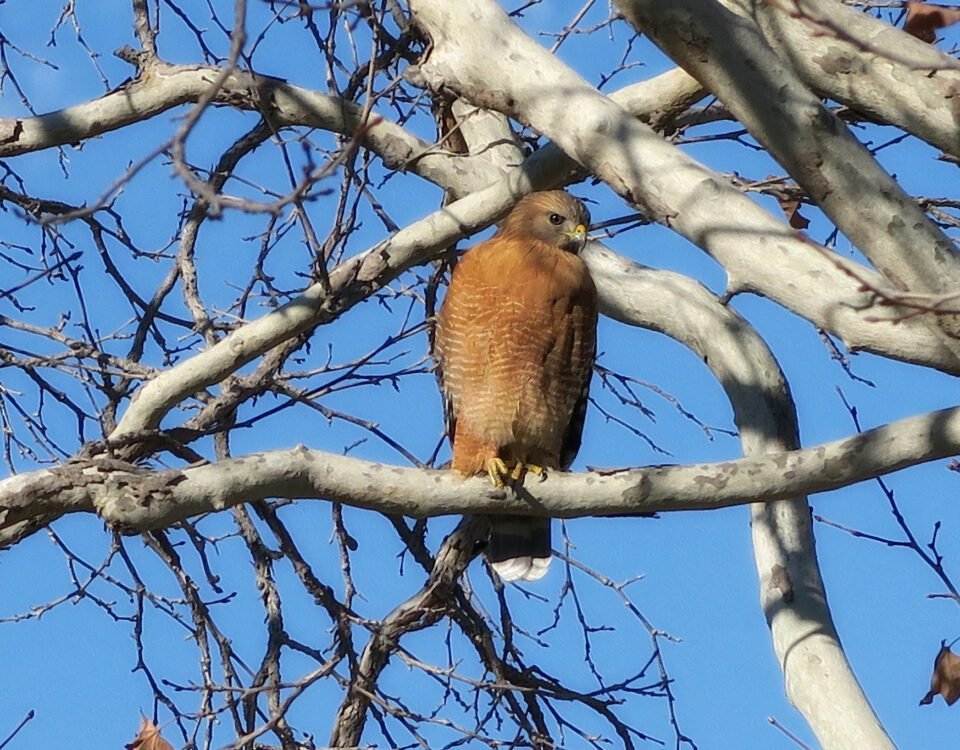


25 Vibrant Flowers to Attract Hummingbirds to Your Garden
November 12, 2023


Why Does My Fish Tank Smell? | How To Remove The Smell?
November 12, 2023Hummingbirds are enchanting creatures with their swift and graceful movements, and attracting them to your garden can be a magical experience. However, like untouchable mystical creatures, hummingbirds can be very shy, making them a rare sight without the right environment.
It requires significant effort to create a space where these birds feel secure enough to visit regularly. In this article, we will explore several factors that might deter hummingbirds from gracing your yard. Moreover, we’ll offer practical remedies for each issue because it’s always best to pair a problem with a potential solution!
Also Read: Real Spiritual Meaning of Hummingbirds [UPDATED 2023]
What Scares Hummingbirds Away?
Here are some of the primary reasons hummingbirds are scared to visit your yard and how you can get rid of this situation.
1: Unclean Hummingbird Feeders
Left in the sun, nectar can ferment and spoil, becoming harmful to hummingbirds. Neglected feeders may expose hummingbirds to diseases like Candidiasis and Avian poxvirus. To prevent this, consistent upkeep of your bird feeders is essential:


Hummingbird Feeder
- Regularly replace the nectar, especially during warmer weather when it needs more frequent changing.
- Ensure the feeder is cleaned at least weekly to prevent contamination.
- For cleaning a bird feeder, avoid using soap.
- Soak the feeder in warm water and then use a bottle brush to scrub away any mold or residue.
- Rinse thoroughly and allow it to dry before refilling.
2: Climate Change
Climate change affects not only humans but also tiny beings like hummingbirds. It primarily impacts their food supply, with sources decreasing over time. Additionally, these environmental shifts can disrupt migration behaviors, altering the traditional migratory routes of these birds.
Also, Read: 25 Birds With Red Heads (+Pictures Included)
3: Large Praying Mantises
Hummingbirds, although they do eat insects, can also fall prey to other insects.
The praying mantis, often perceived as a gentle insect, is capable of preying on creatures up to three times its size. A sizable praying mantis is capable of capturing and consuming a hummingbird, with smaller species like the Rufous hummingbird being particularly vulnerable.
Praying mantises typically lie in wait on nectar feeders, aiming to catch insects like bees and wasps. However, they can occasionally seize and kill hummingbirds.
To protect these birds, it’s wise to regularly inspect your feeders and relocate them if needed to prevent mantises from reaching them.
4: Bees, Yellow Jackets, and Wasps
While hummingbirds aren’t inherently fearful of bees and typically steer clear of hives, they recognize the threat posed by wasps and bees. These insects usually won’t attack a hummingbird without provocation, but should a sting occur, it can be fatal for the bird.
To safeguard hummingbirds, fitting your feeders with a bee guard can be effective, allowing these delicate creatures to feed without stress.
5: Cats And Dogs
To you, your pets may seem like loving companions, but to a hummingbird, they can pose a lethal threat. The quick and lively movements of a hummingbird, along with their bright colors, can entice cats and dogs to chase and even try to catch them. It’s crucial to prevent your pets from harming hummingbirds.


Indoor Cat
While falling prey to a predator can sometimes be a matter of luck, there are measures you can take to reduce the risk.
- For instance, when hummingbirds are most active, keep your pets indoors or engage with them in other areas like parks.
- Additionally, you can create a garden section specifically for these birds by planting flowers that attract them, ensuring this area is a safe haven away from pet play zones.
This way, your garden can cater to the needs of both your pets and visiting hummingbirds.
6: Food Deficiency
Hummingbirds consume an extraordinary amount of food relative to their body weight due to their rapid metabolism, and their energetic hovering further accelerates their caloric needs. On average, they may visit up to 1,800 flowers daily to obtain the necessary energy from nectar.
A lack of adequate food can pose a critical risk to their survival.
- Planting a variety of hummingbird-attracting flowers in your yard can remedy this issue.
- Additionally, inspiring your neighbors to cultivate hummingbird-friendly gardens can extend the habitat and food sources for these birds across your community.
7: Other Visiting Birds
It might not be very common, but birds, including other hummingbirds, can sometimes be a threat to one another. Common avian predators such as owls, woodpeckers, orioles, blue jays, hawks, grackles, starlings, and gulls are known to lurk around feeding areas intended for hummingbirds, often trying to scare them away.


Hawks Claws
Furthermore, hummingbirds can be aggressive towards their own kind. While certain species, like the Rufous hummingbird, are known for being particularly territorial, it’s common for many hummingbirds, especially males, to be fiercely protective of their feeding space.
These tiny birds may use their beaks and claws to fend off other birds during confrontations.
8: The Use Of Pesticides & Insecticides
Applying pesticides and insecticides is a forever practice, and although their use is sometimes understandable, it’s advisable to minimize their deployment.
These chemicals can be hazardous to hummingbirds, not only by introducing toxins into their environment but also by diminishing their primary insect food sources, thereby impacting their survival and well-being.


The Use Of Pesticides & Insecticides
The good news is that there are alternatives in the form of organic or non-toxic products for your garden. It’s essential to conduct thorough research and consult reviews before making a selection at your preferred merchant store. This ensures you choose options that are safe for hummingbirds and the environment.
9: Summer And Winter
Hummingbirds are sensitive to extreme temperatures. In overly hot conditions, these birds struggle to find sufficient food, as flowers may fade, and their critical water sources can diminish. Additionally, the nectar they feed on can spoil much more rapidly in the heat.
Conversely, in cold weather, hummingbirds face the challenge of maintaining their body heat due to their small size. They may enter a state of torpor to conserve energy, which drastically lowers their metabolic rate and heart rate.
Migration is a natural response to winter’s approach, as cold conditions can deplete their insect food sources, which are essential for protein. Thus, hummingbirds relocate to warmer climates where food remains accessible.
10: Poorly Looked-After Garden
If a garden is neglected or overgrown, it can pose various difficulties for hummingbirds. The thick foliage and general mess hinder their ability to move around freely and locate nourishment, as they favor more open spaces that allow for unobstructed access to both flowers and feeders.
To eliminate these issues, it’s beneficial to engage in routine garden maintenance.
This would involve trimming any excessively lush plants, ensuring that pathways are unobstructed, and eliminating any unnecessary clutter.
By doing so, you create a welcoming habitat for hummingbirds, complete with tidy and readily available food sources and feeding areas.
11: Spider Webs
Spider webs play a double role in the lives of hummingbirds. Female hummingbirds often utilize spider silk to construct their nests, taking advantage of its strength and flexibility.
However, there is a downside to this interaction. Both female and male hummingbirds can unintentionally become trapped in spider webs. Moreover, while they do feed on small insects, attempting to extract these insects from nets can be risky and potentially hazardous for the hummingbirds.
12: Lack of Hummingbird-Friendly Flowers
The absence of naturally nectar-bearing flowers can be less inviting for hummingbirds. While they enjoy the nectar feeders provide, they also thrive on the nectar found in various plants.


Hummingbird Sucking Nectar
Ensuring a garden is abundant with hummingbird-friendly flowers is vital. Varieties such as Lilies, Hummingbird vine, Trumpet vine, Petunias, Hosta flowers, Bluebells, and Rose of Sharon are ideally shaped for the long, slender beaks of hummingbirds, making them perfect for these birds to feed from.
Lantana and Crepe Myrtles have also been observed to attract hummingbirds, contributing to a diverse and hospitable environment for these avian visitors.
13: Lack of Water
A scarcity of water sources can deter hummingbirds from visiting an area. These birds are particularly fond of moving water. Many people have noticed increased hummingbird visits when sprinklers are active, indicating their attraction to the water’s motion. Hence, adding a bird bath equipped with a bubbler can enhance your yard’s appeal to hummingbirds.
For those willing to invest a bit more, an electric fountain is an attractive water feature. Even a simple bird bath can serve as a valuable resource for these birds, providing them with much-needed hydration alongside their food.
14: Loud Noises
The presence of loud noises can make hummingbirds feel uneasy. Due to their small size, they can be pretty sensitive to disturbances such as blaring music, loud play from children, or the sound of dogs barking.
To create a sanctuary for these delicate birds, it’s advisable to maintain a quiet environment. Reducing noise levels in your yard may just be the solution to encourage hummingbirds to visit more frequently.
15: No Bright Colors In The Garden
The lack of vibrant hues in your garden might be less inviting for hummingbirds. They are naturally drawn to vivid colors, mainly red and orange, which signal the presence of nectar.
To attract their attention, incorporate these colors prominently in your yard. Choose red feeders and plant an abundance of red and orange blossoms. Such splashes of color not only capture their interest but may also encourage them to linger longer in your garden.
16: Lack Of Space For Building Nests
If your yard lacks suitable nesting spots, hummingbirds may be less likely to visit. They prefer building their tiny nests in sheltered shrubs or small trees. The absence of such nesting options can be unwelcoming.


Hanging Birdhouses
Therefore, introducing a line of shrubs or a small tree can make a significant impact, providing the cozy and secure environment hummingbirds seek for their homes and enticing them to stay around.
Related Read: Do Hummingbirds Attack Humans? How to Save Yourself?
Final Thoughts
To sum up our exploration of what may discourage hummingbirds from gracing our gardens, it’s essential to take note of certain factors.
Predatory threats, lack of vibrant flora, excessive noise, aggressive vegetation, chemical sprays, and even our cherished pets can deter these petite birds.
However, there’s no need to worry! With some considerate adjustments, such as selecting indigenous flora, reducing noise, and managing pet activities during the hummingbirds’ most active times, you can transform your outdoor space into a welcoming sanctuary for these exquisite feathered guests.



